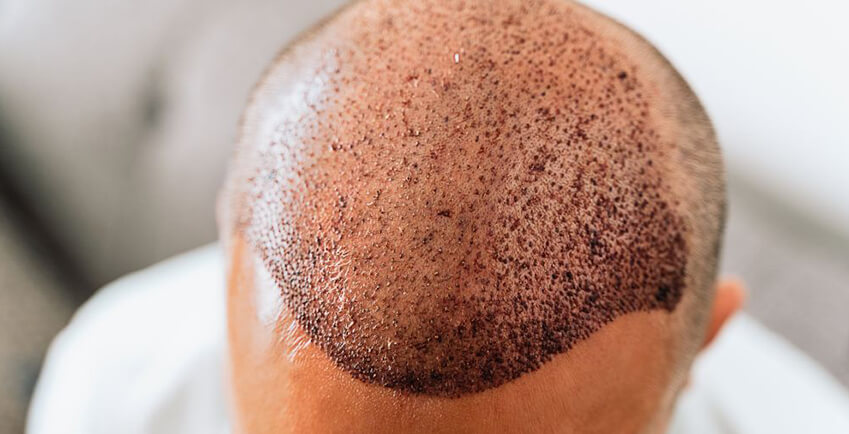With promising and long-lasting effects, hair transplantation has grown in popularity over the years as a treatment for hair loss. It is now even more crucial that we fully understand the procedure, the risks involved, and the safety standards that must be looked at before consulting any doctor for your transplant, especially with the growing number of clinics in virtually all the cities and the occasional media reports about accidents during this procedure. In this comprehensive guide let’s explore everything you need to know about this procedure.
Techniques of hair transplants
The two commonly used techniques are FUE ( Follicular unit extraction )and FUT(Follicular unit transplant). In FUE the surgeon extracts the individual follicles with the help of a tiny hair punch and hence is a minimally invasive technique. In FUT also known as the strip method, a strip of scalp is harvested from the donor area which is then sutured back. The follicles are then harvested from this strip and then implanted. This technique is ideal in cases where a large number of grafts are needed. Each technique has its advantages and can be used individually or as a combination as per the requirement of the grafts by the surgeon.
Is it safe to get a hair transplant?
Procedures for hair transplants are usually safe as long as they are carried out by a licensed professional at an accredited facility. However, there are some risks involved that should be discussed before the treatment and how your surgeon plans to deal with them. You should talk about your entire medical history, be aware of the challenges involved, and know how they will be addressed.
Do clinic hygiene standards matter?
Any surgery should always be performed in a clean and sterile environment to reduce the risk of infections and graft failure. The facility should be well equipped to handle any medical emergency if at all needed. It is important that all protocols are followed including proper fumigation of the operating room, sterile surgical instruments, Trained staff and proper monitoring throughout the procedure. A good facility routinely has its own standard of protocol which is followed to ensure safety.
Is Qualification of Surgeon Important?
We need to understand that your surgeon is the most vital part of the entire process. From planning the entire procedure and designing a natural-looking hairline to your post-operative management it’s the surgeon who is behind the wheel. Always check for board certification in plastic surgery or dermatology. A well-qualified surgeon is important to ensure your safety and for natural-looking results. Discuss with your surgeon their plan and the technique that will be used for your case along with the possible risks and complications during your consultation.
What are the risks associated with Hair transplants?
Although rare post-operatively you can experience scalp swelling, redness, irritation, bleeding, infection, scabbing and temporary numbness. You might also experience scarring, especially in the cases of FUT (Follicular unit transplantation) where s strip is removed from the back of the scalp. Another important issue is the unnatural hairline line which can result from poor planning by an unskilled practitioner. Improper handling of the grafts during the procedure might result in damage to the follicles resulting in failed grafts and hence substandard results.
What are the cons of hair transplant surgery?
It is important to realise that a hair transplant is not just a surgery but a journey. Multiple sessions may be required especially when you present at a very young age in need of a transplant.
As available donor hair from the scalp is limited, we might need to harvest these follicles from other areas like bread or chest wall, especially in cases of repeat transplants which might add to dissatisfaction.
Good-quality procedures can be expensive and are typically not covered by insurance.
Results take approx. 8-12 months to be visible for which you have to be very patient.
Apart from the surgery, proper post-operative care and management as prescribed by your surgeon are equally important for your hair health.
Post-operative care
No surgery is successful and complete without proper post-operative care which greatly affects the outcome. It typically includes keeping the grafts hydrated, avoiding direct sun exposure, avoiding scratching and picking the scabs, taking prescribed medications on time and following up as advised by your surgeon. Make sure you understand the instructions and follow them religiously.
Unlicensed operators or technicians masquerading as surgeons is a growing problem in most of the cities hence you need to be cautious of clinics offering unrealistically low prices or promoting results that seem too good to be true. In unqualified hands medical negligence can lead to permanent scarring, unnatural results or irreversible damage. Examples of negligence also include using unsterile instruments, unhygienic operating room conditions, and ignoring patients’ medical history.
To conclude, a hair transplant is safe when done by a qualified surgeon at a certified facility. If you are planning a procedure, make sure to check the credentials of your surgeon and discuss the entire procedure, including associated risks and complications, as well as how they will be managed during your consultation and then, make an informed decision to undergo a transplant.
Dr Aakansha Vashistha
dr.vashisthaakansha@gmail.com
8561840164
IAAPS NUMBER: 2024/RJ/30
Disclaimer : The opinions here are personal views of the authors. IAAPS is not responsible. All members may not have the same scientific view point

